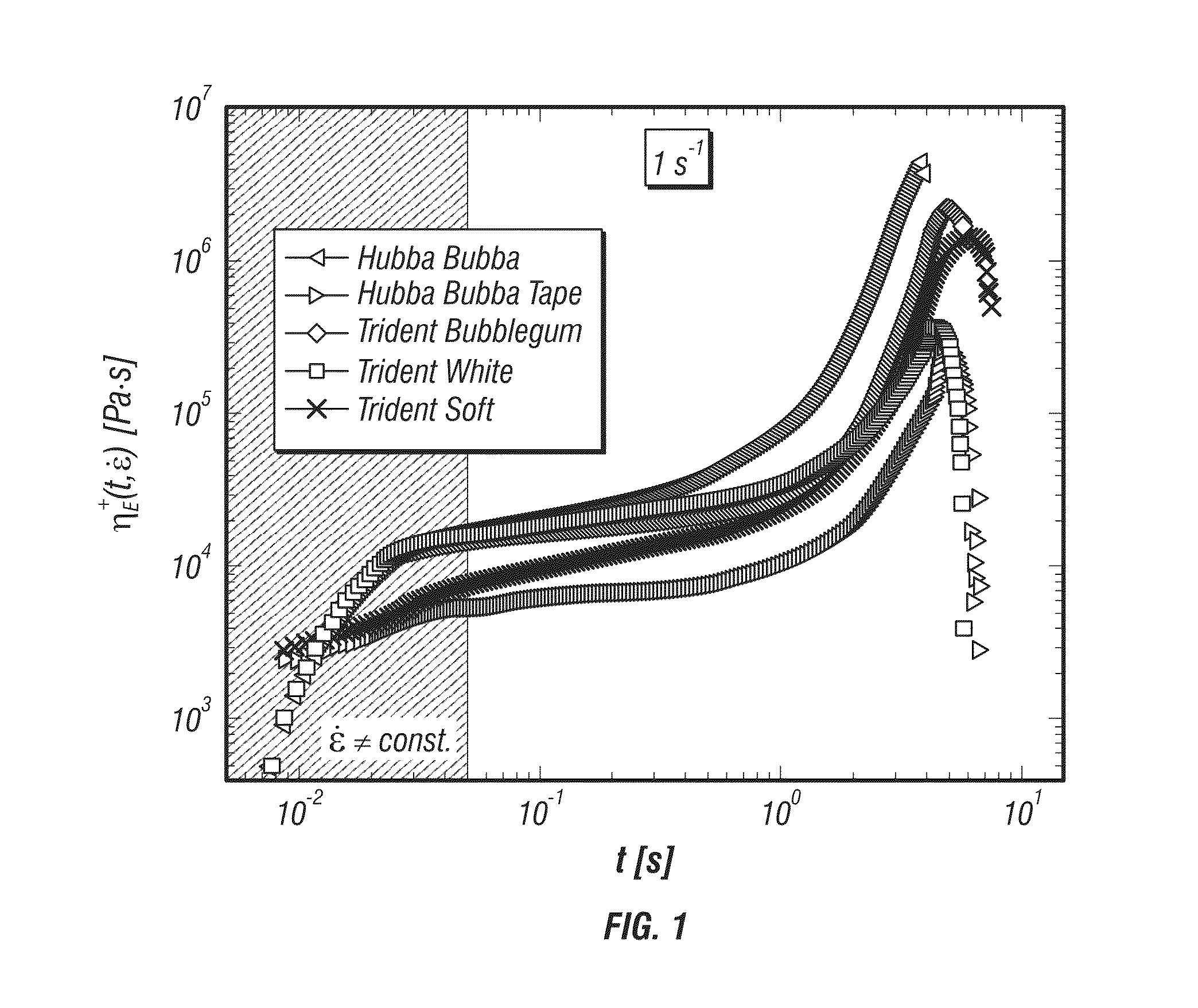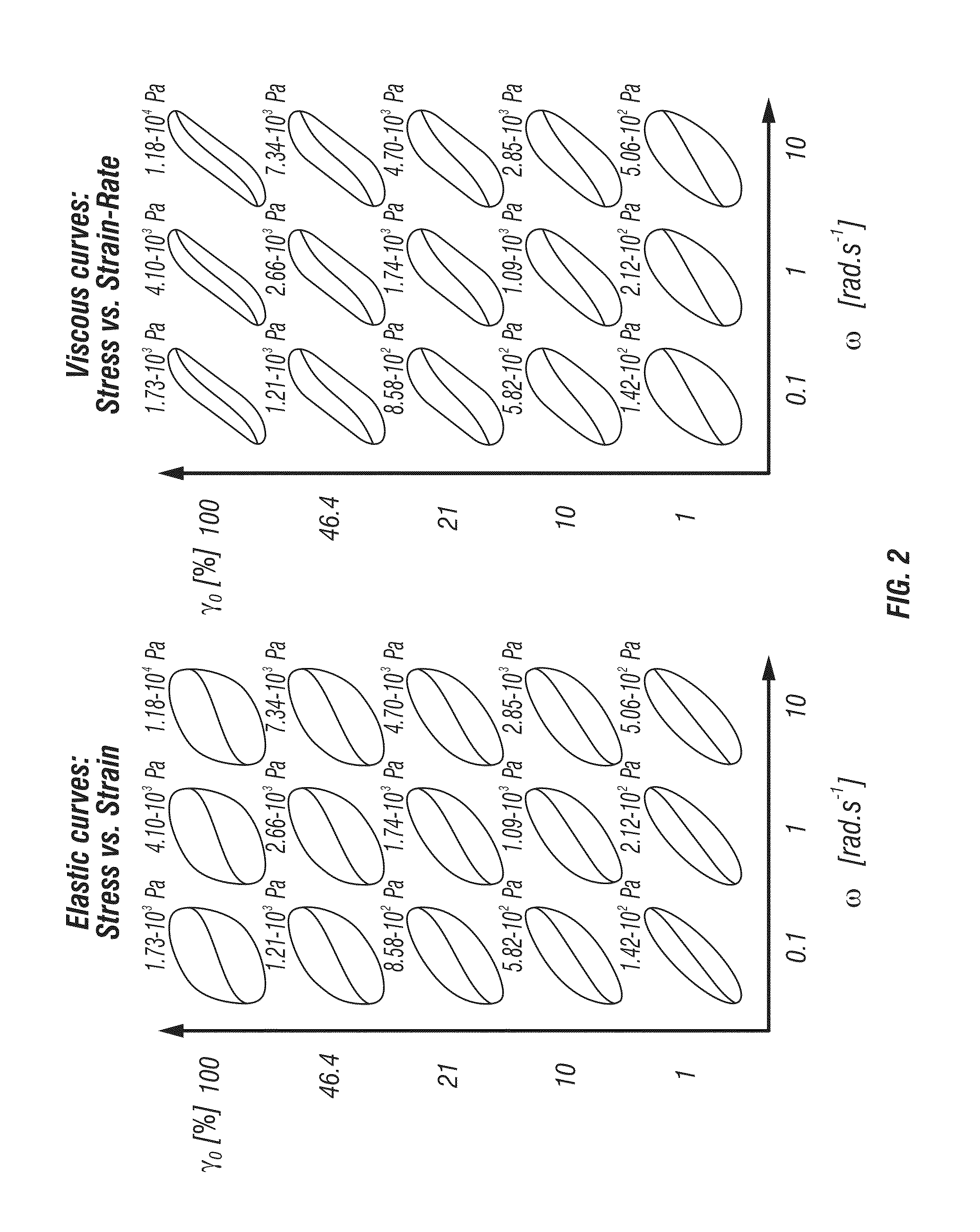Nonlinear rheology of chewing gum and gum base
a chewing gum and rheology technology, applied in the direction of chewing gum, material strength using tensile/compressive forces, instruments, etc., can solve the problems of too expensive or inapplicable to do sensory testing with human subjects, high production cost, and high cost of sensory tests
- Summary
- Abstract
- Description
- Claims
- Application Information
AI Technical Summary
Benefits of technology
Problems solved by technology
Method used
Image
Examples
Embodiment Construction
[0018]Chewing gum provides an excellent everyday example of viscoelastic behavior. It flows when being chewed or pulled slowly between the fingers, internal stresses persist after the deformation has ceased, and recoil occurs when it is suddenly relieved of an externally imposed stress. It also breaks when being blown into bubbles or pulled rapidly. Hence, understanding the rheological properties of chewing gums is important for application and processing purposes. The act of chewing involves nonlinear large, complex, and unsteady deformations from the closing phase, gliding phase, to the opening phase. The closing phase can be correlated to biaxial extension or uniaxial compression. The gliding phase can be correlated to large amplitude oscillatory shear test (LAOS) and the opening phase can be correlated to start up flows in uniaxial extension.
[0019]The present invention provides a method of selecting a commercially viable chewing gum using nonlinear rheology. The nonlinear rheolo...
PUM
 Login to View More
Login to View More Abstract
Description
Claims
Application Information
 Login to View More
Login to View More - R&D
- Intellectual Property
- Life Sciences
- Materials
- Tech Scout
- Unparalleled Data Quality
- Higher Quality Content
- 60% Fewer Hallucinations
Browse by: Latest US Patents, China's latest patents, Technical Efficacy Thesaurus, Application Domain, Technology Topic, Popular Technical Reports.
© 2025 PatSnap. All rights reserved.Legal|Privacy policy|Modern Slavery Act Transparency Statement|Sitemap|About US| Contact US: help@patsnap.com



